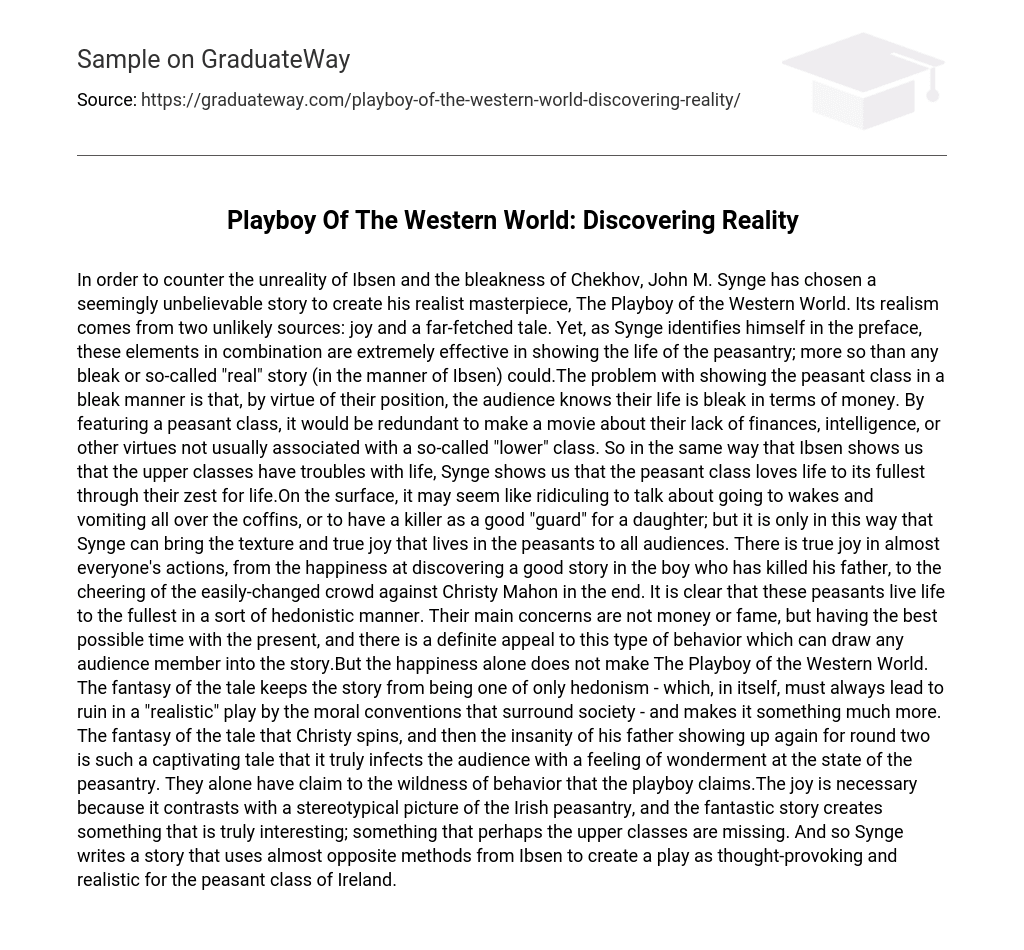John M. Synge’s realist masterpiece, The Playboy of the Western World, diverges from the unreality of Ibsen and the bleakness of Chekhov. To achieve realism, Synge opts for an initially unbelievable story. However, he acknowledges in the preface that this combination of improbable events and joy effectively portrays the life of the peasantry, surpassing any bleak or “real” tale like Ibsen’s. Portraying the peasant class in a grim manner presents a challenge as the audience is already aware of their bleak financial circumstances.
The movie should not portray the peasant class as lacking finances, intelligence, or other virtues typically associated with a lower social class. Ibsen reveals that the upper classes also face challenges in life, just as Synge shows that the peasant class experiences life to the fullest with their enthusiasm. At first glance, discussing attending wakes and vomiting on coffins, or having a killer as a daughter’s protector may seem like ridiculing. However, Synge presents this in order to showcase the richness and genuine joy that the peasants possess to all viewers. The peasants’ actions are filled with true happiness, from the excitement of discovering a compelling story in the boy who killed his father, to the crowd’s support against Christy Mahon in the end. It is evident that these peasants embrace life with a hedonistic approach.
The main priority of the characters is not wealth or fame, but enjoying the present moment, and this behavior has a compelling appeal that can engage any audience member. However, The Playboy of the Western World is not solely about happiness. The presence of fantasy prevents the story from being purely focused on hedonism, as society’s moral conventions dictate that such behavior only leads to ruin in a “realistic” play. Instead, it becomes something more. The captivating tale spun by Christy and the unexpected return of his father create a sense of wonderment among the audience, as they marvel at the wildness of the peasantry’s actions – an aspect only they seem to possess. This joy is essential as it challenges the stereotypes associated with the Irish peasantry, and the fantastical narrative generates genuine intrigue – something potentially missing from the upper classes’ lives. Therefore, Synge crafts a story that employs contrasting approaches to Ibsen’s methods, resulting in a play that is both thought-provoking and realistic for the peasant class in Ireland.





